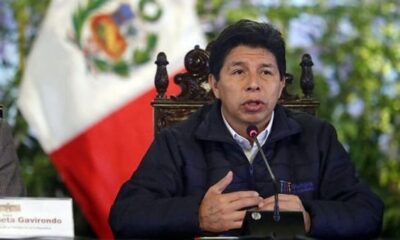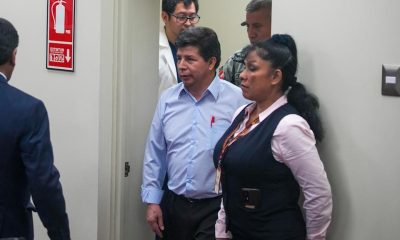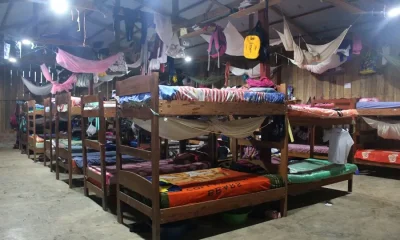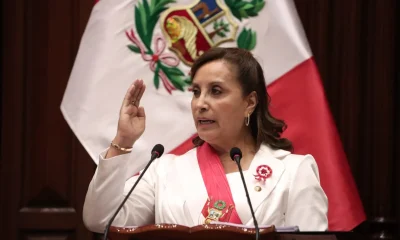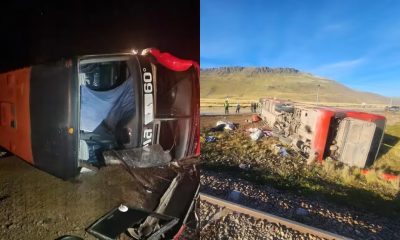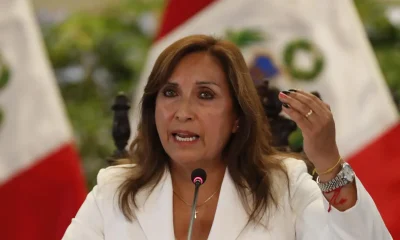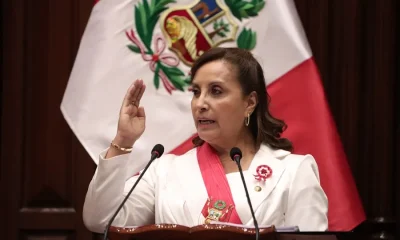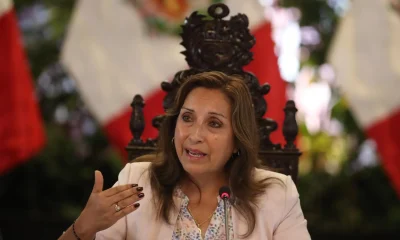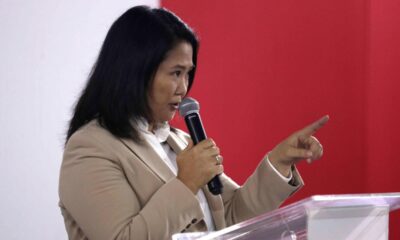International
Two replicas of 4.0 and 4.2 shake southern Peru, after a magnitude 7 earthquake
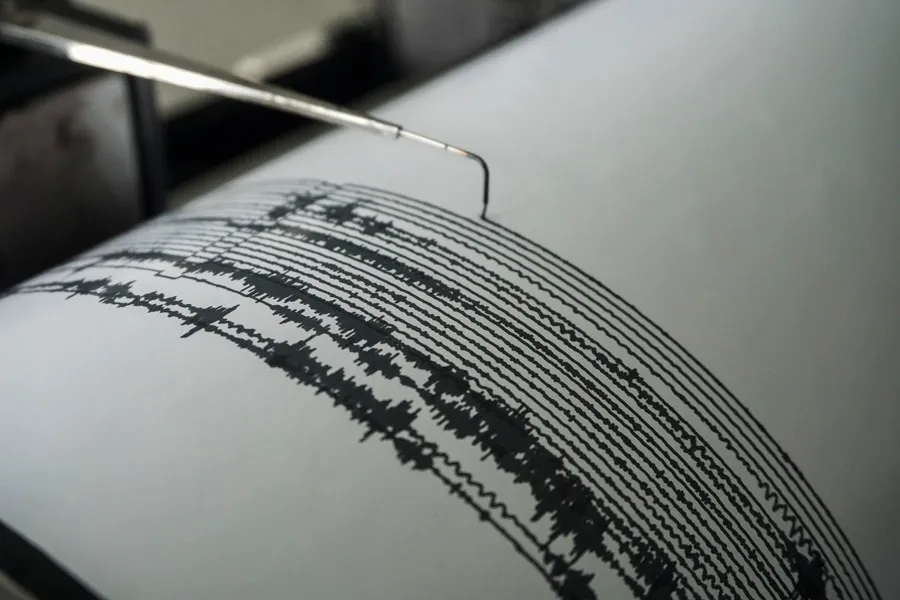
Two earthquakes of magnitude 4.0 and 4.2 shook southern Peru in the early hours of this Friday, less than an hour after another 7.0 earthquake shook the department of Arequipa and the neighboring regions.
The Geophysical Institute of Peru (IGP) detailed on social network X that the two earrtakes occurred in the coastal district of Yauca and its neighbor Lomas.
The first tremor, of magnitude 7.0, occurred at 0:36 (5:36 GMT) with an epicenter 54 kilometers southwest of the coastal district of Yauca, where last Saturday there were two earthquakes of magnitude 5.7 and 5.
Shortly after, the Directorate of Hydrography and Navigation of the Peruvian Navy issued a tsunami alert for the area.
However, shortly after he detailed that “the arrival of the first wave is recorded at 12:51 a.m. from a height of the order of 15 centimeters.”
The Prime Minister, Gustavo Adrianzén, told the RPP station that the tsunami alert has already been lifted.
Peru is located in a region known as the Pacific Firebelt, where more than 80% of the world’s seismic activity is produced.
The last devastating earthquake in the country occurred in front of the coastal city of Pisco in August 2007, when a movement of magnitude 7.9 hit that town and the entire southern region of Ica, with a balance of more than 500 deaths, as well as millionaire losses in infrastructure and housing.
The Prime Minister of Peru, Gustavo Adrianzén, reported that the earthquake has caused material damage but, so far, no fatalities have been reported.
“Thank God, until this time we have no fatalities registered,” Adrianzén told the RPP station before adding that the tsunami alert that was launched after the strong telluric movement, which had its epicenter in the Pacific Ocean, has also been ruled out.
Adrianzén expressed his solidarity with the populations affected by the earthquake and asked them for “tranquility”, because the authorities are already doing the evaluations to address any emergency.
“Yes, there has been an affectation in some properties,” he confirmed before ratifying that all the information that is available is still preliminary.
The prime minister reiterated his call for “calm and tranquility,” but always asked to maintain security measures since, despite a tsunami having been ruled out, it is possible that an abnormal swell will appear on the coast.
International
Police investigate deaths of Rob Reiner and wife as apparent homicide

The Los Angeles Police Department (LAPD) is investigating the deaths of Hollywood actor and filmmaker Rob Reinerand his wife as an “apparent homicide,” amid a wave of tributes to the director of classics such as When Harry Met Sally.
According to U.S. media reports on Sunday, Rob Reiner and Michele Singer Reiner were found dead at their Los Angeles mansion with what appeared to be stab wounds.
Several political figures shared messages of condolence following the reported deaths of the director of A Few Good Menand his wife.
While the LAPD did not officially confirm the identities of the victims, it stated that homicide detectives were dispatched to the Reiner residence.
“At this time, no additional details are available and the investigation into an apparent homicide is ongoing,” the Los Angeles Police Department said in a statement posted on social media.
LAPD Deputy Chief Alan Hamilton told reporters that no arrests have been made and that no individuals are currently being questioned as suspects.
“I’m not going to confirm whether anyone is being questioned at this moment or not. We are going to try to speak with as many family members as we can,” Hamilton said.
CNN reported that a family spokesperson confirmed the deaths of Reiner and his wife.
California Governor Gavin Newsom, former U.S. President Barack Obama, and former Vice President Kamala Harrisissued statements expressing their condolences.
International
U.S. and Mexico Reach Deal to Address Water Deficit Under 1944 Treaty

The United States and Mexico have reached an agreement to comply with current water obligations affecting U.S. farmers and ranchers and for Mexico to cover its water deficit to Texas under the 1944 Water Treaty, the U.S. Department of Agriculture said in a statement.
The department уточified that the agreement applies to both the current cycle and the water deficit from the previous cycle.
On Monday, U.S. President Donald Trump accused Mexico of failing to comply with the water-sharing treaty between the two countries, which requires the United States to deliver 1.85 billion cubic meters of water from the Colorado River, while Mexico must supply 432 million cubic meters from the Rio Grande.
Mexico is behind on its commitments. According to Washington, the country has accumulated a deficit of more than one billion cubic meters of water over the past five years.
“This violation is severely harming our beautiful crops and our livestock in Texas,” Trump wrote on Monday.
The Department of Agriculture said on Friday that Mexico had agreed to supply 250 million cubic meters of water starting next week and to work toward closing the shortfall.
Agriculture Secretary Brooke Rollins, quoted in the statement, said Mexico delivered more water in a single year than it had over the previous four years combined.
Trump has said that if Mexico continues to fall short of its obligations, the United States reserves the right to impose 5% tariffs on imported Mexican products.
Mexico’s Deputy Foreign Minister for North America, Roberto Velasco, said that a severe drought in 2022 and 2023prevented the country from meeting its commitments.
International
Several people shot in attack on Brown University campus

Several people were shot on Saturday in an attack on the campus of Brown University, in the northeastern United States, local police reported.
“Shelter in place and avoid the area until further notice,” the Providence Police Department urged in a post on X. Brown University is located in Providence, the capital of the state of Rhode Island.
U.S. President Donald Trump said on his social media platform Truth Social that he had been briefed on the situation and that the FBI was on the scene.
At 5:52 p.m. local time (11:52 p.m. GMT), Brown University said the situation was still “ongoing” and instructed students to remain sheltered until further notice.
After initially stating that the suspect had been taken into custody, Trump later posted a second message clarifying that local police had walked back that information. “The suspect has NOT been apprehended,” the U.S. president said.
-

 Central America2 days ago
Central America2 days agoPanama seizes over three tons of drugs hidden in Caribbean port container
-

 International2 days ago
International2 days agoPolice investigate deaths of Rob Reiner and wife as apparent homicide
-

 International3 days ago
International3 days agoSeveral people shot in attack on Brown University campus
-

 Central America2 days ago
Central America2 days agoOAS urges swift recount in Honduras as election results remain uncertain
-

 International3 days ago
International3 days agoU.S. and Mexico Reach Deal to Address Water Deficit Under 1944 Treaty
-
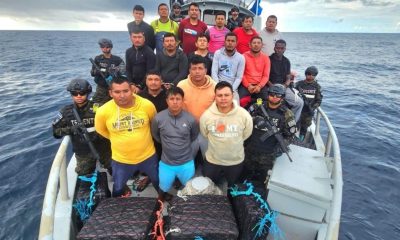
 Central America16 hours ago
Central America16 hours agoEl Salvador ranks among top countries in the Americas in fight against organized crime
-
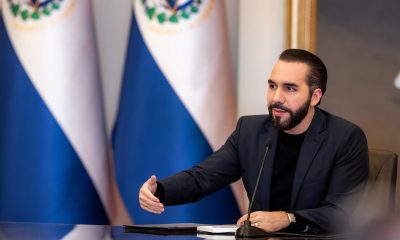
 Central America16 hours ago
Central America16 hours agoBukele says AI partnership with xAI will transform public education in El Salvador

























